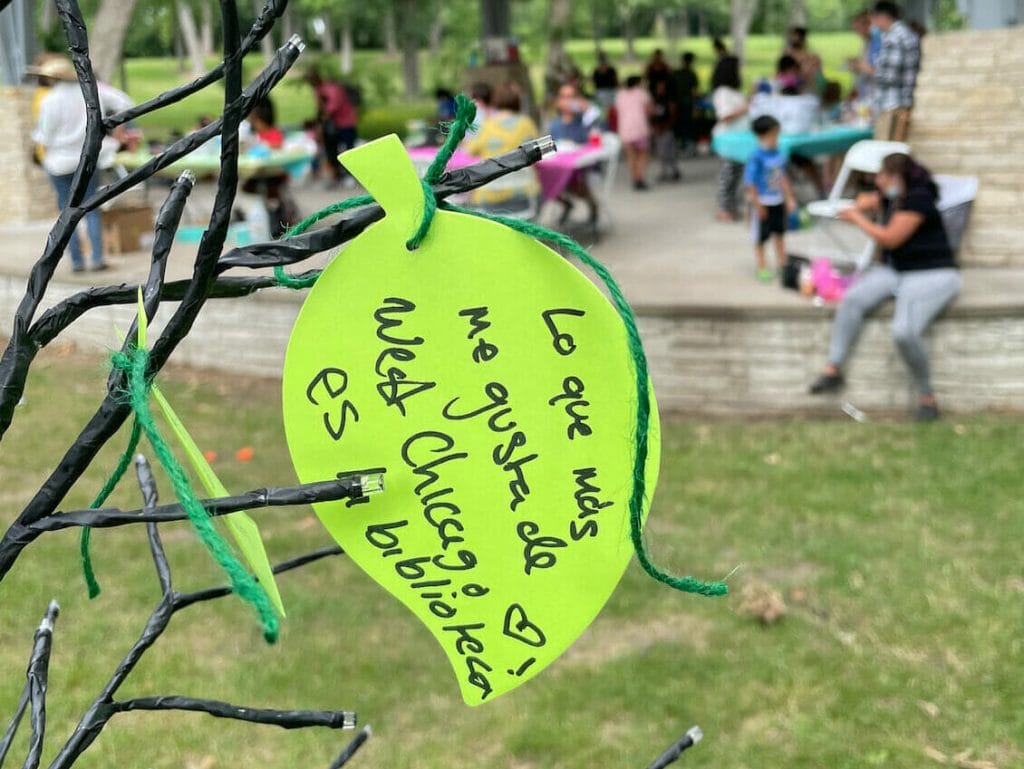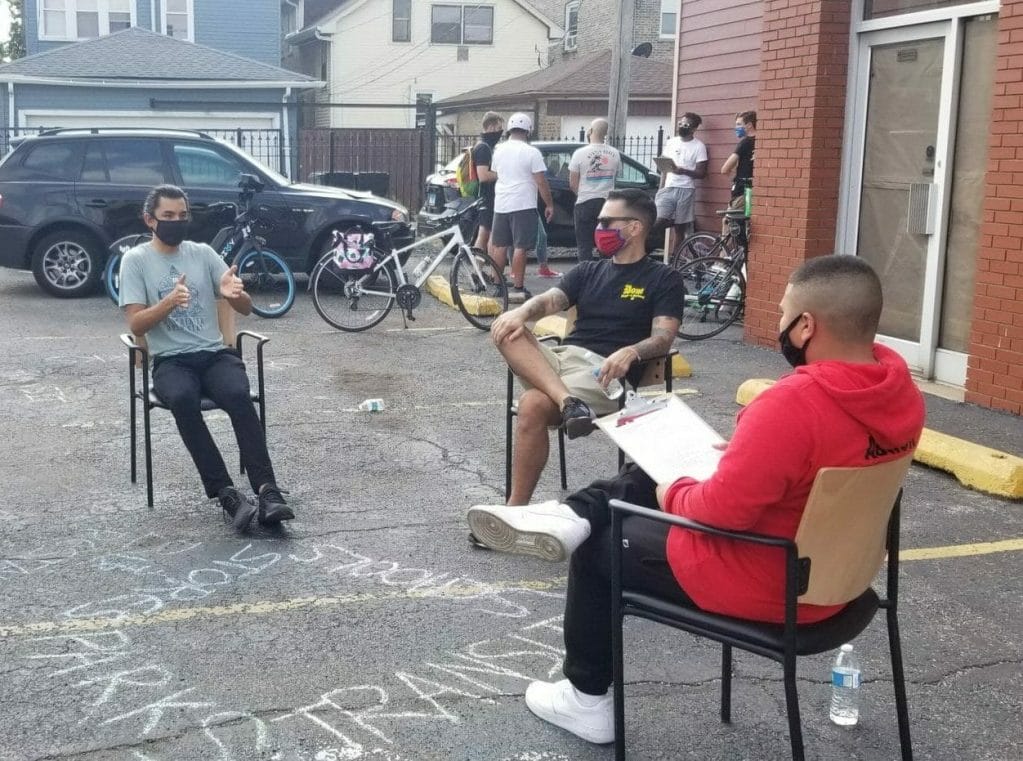Bilingual and Bicultural Engagement: Translation is Just the Beginning
By Romina Castillo, Senior Associate
According to the 2020 US Census, the Latinx population has grown to become the second largest racial or ethnic group in Chicago. Nationally, Latinx accounted for more than half of the country’s population growth since 2010. In line with these trends, we have seen an increase in the need for bilingual and bicultural engagement processes in our work at MUSE.
Bilingual and bicultural engagement will look different depending on the community and the predominant languages spoken there. As a Mexican immigrant, my experience and expertise are based on Spanish-English engagement. The strategies and lessons shared below are from that perspective and may be applicable to other bilingual communities.

Finding the Right Words
- Translation is just the beginning. A bilingual and bicultural engagement plan goes beyond simply translating materials word-for-word. We have had success by having more than one Spanish-proficient person on the team review translated content. Discussing the material allows the team to reach consensus on tone and word choices, maintaining consistency throughout the engagement process.
- Jargon is jargon in any language. Using technical jargon creates a barrier and discourages individuals from participating in conversations, no matter what language you’re speaking. When introducing new technical concepts or terms, make sure to describe the new concepts using synonyms or more common words.
- Train the translator. If someone from your team or from a community partner organization has been enlisted to translate or provide English to Spanish interpretation on behalf of the project, prepare them with additional subject matter context. This might include creating a script, glossary, sharing helpful YouTube videos, and even hosting a training session. Empower your translators to be ambassadors of the project in order to ensure a deep and rich engagement process.
- Use words that are recognized by the people in the community. Language is fluid, it changes and adapts. Even when you or a translator know there is a “correct” way to translate something, the translation may not be the colloquial word used in the community you are working in. For example, when referring to sidewalks, some Spanish speakers may recognize “aceras” but others will know them as “banquetas”. Both terms are correct, but it is important to use a word that is meaningful to the local community.
Lessons learned by our MUSE team:
MUSE designed a resident survey for the City of West Chicago as part of our engagement process for the West Chicago Forward/Adelante Comprehensive Plan. We were mindful of the tone and word choices in the Spanish translation of the survey, stripping it of jargon and ensuring the language was accessible to people with diverse educational backgrounds. We used printed surveys at engagement events as a jumping off point for more casual conversations with West Chicago’s Latinx neighbors.
Identifying Influencers and Stakeholders
- Leverage the power and resilience of Latinx women. Women are the true source of power behind any Latinx community. They are active leaders, advocates, and participants in efforts to improve their communities. They will be your closest allies, spread the word, invite others, and support your activities if you involve them and design outreach activities that engage them thoughtfully and in spaces that they already know. Be prepared to have delightful conversations with mujeres fuertes con muchas opiniones and to learn from their experiences.

- Go where people already meet and feel safe. In predominately immigrant communities, spaces like churches or other community centers are considered safe havens. We have hosted focus groups after a Sunday church service, shared project information at local grocery stores, and used culturally relevant digital platforms to connect with Latinx neighbors. Sharing your agenda in spaces where people already gather and connect allows community members to open up more easily, provide more detailed feedback, and build trust with you and your project.
- A phone call is worth a thousand emails. Culturally, the Latinx community likes to build one-on-one connections and can be skeptical of mass email. When partnering with community organizations to recruit participants, you will learn that many of them rely on text or phone calls to organize and mobilize their base. It will be wise to join those group texts, if possible, to have direct contact with community members, identify key leaders, and build long-lasting relationships.
Lessons learned by our MUSE team:
When recruiting participants for a Spanish language focus group for the Cook County Transit Plan, our team invited a community garden group to participate. All participants were women and they were compensated for their time, feedback, and local expertise. At the end of the meeting, they asked how they could stay in touch with our team for future events and for questions regarding their stipend. As the facilitator of this session, I shared my phone number right away, knowing that this might be the best way for them to reach me. As a result, I was added to a WhatsApp Cook County group created exclusively to follow up regarding our conversations. This group of women has extended an ongoing invitation to join their meetings, and have expressed willingness to engage with us in future conversations.
Partnering with the Next Generation
- Embrace fresh ideas. Youth are not indifferent to what happens around them. Many young people in Latinx communities are involved and extremely passionate about a variety of issues. They experience the impacts of disinvestment, inequality, and injustice first-hand. Their experiences have helped them forge a voice and perspective on how things can improve in their communities. Listen to them, attend their meetings, and identify ways to collaborate with them. You will learn that they might already have plans and visions for the very same thing you are trying to address in your project.
- Empower youth to lead the process. Don’t just invite youth to participate in meetings, allow them to be active partners in the engagement process. Build partnerships with organizations that work with youth to design programming that is relevant to their interests. We have had success with youth-led bike tours, teaming with engineering classes at a high school for career talks, and incorporating a citywide plan into a summer arts camp curriculum.

Lessons learned by our MUSE team:
When we shifted engagement efforts online during the pandemic, our team was afraid we might lose the youth participation that we had been counting on for some of our projects. However, one of our partners came up with an idea to continue supporting our engagement efforts for the Divvy Expansion in Little Village: a group of young leaders biked to proposed locations for Divvy stations, documenting their bike rides and observations with a GoPro. This same group also interviewed business owners and other community members about biking in the community and to get feedback on proposed Divvy stations.
When your bilingual engagement plan succeeds, my people succeed. Intentional bilingual and bicultural engagement allows non-English speakers to be fully immersed in a planning process, becoming collaborators and long-term stewards of their own communities.
